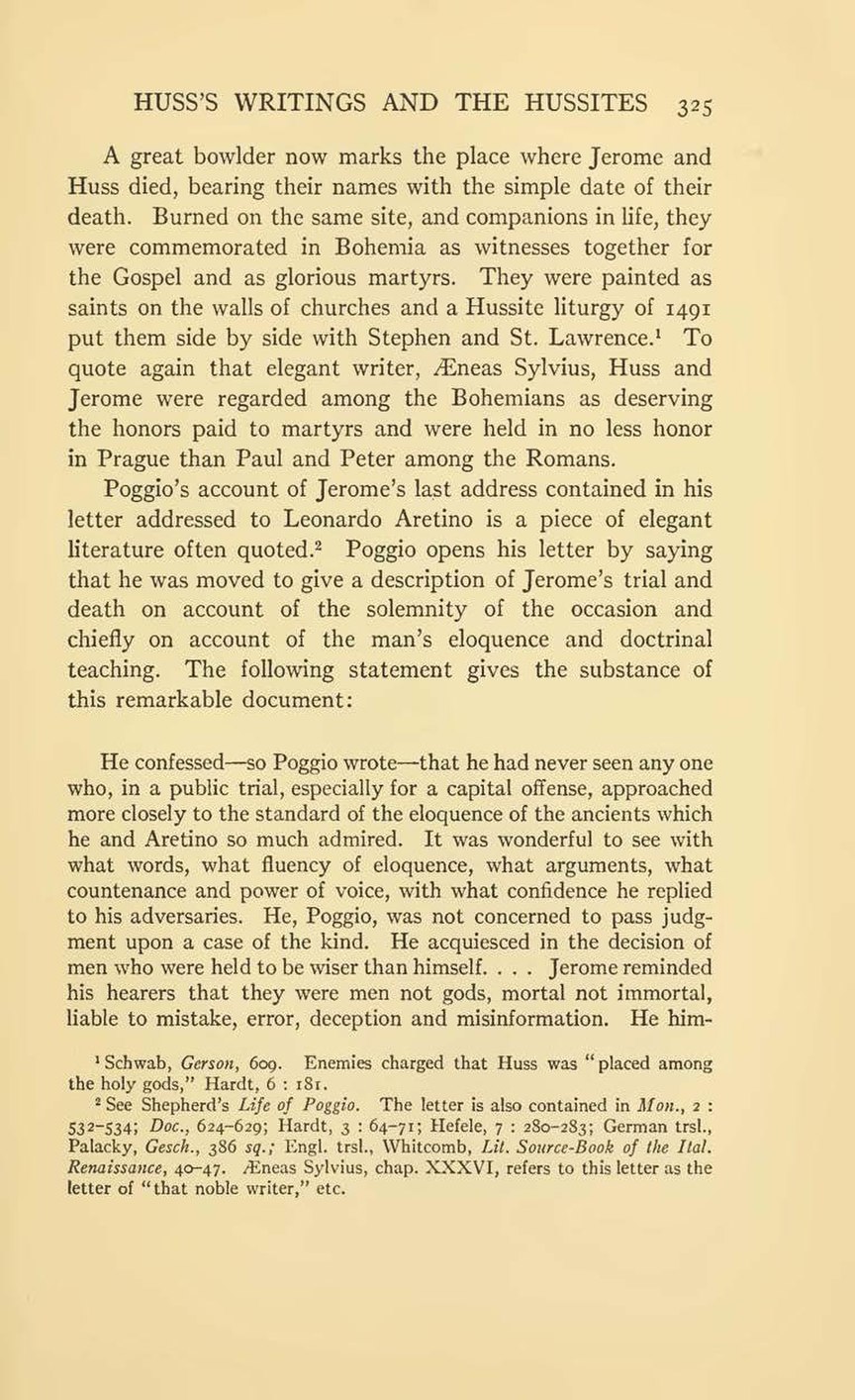A great bowlder now marks the place where Jerome and Huss died, bearing their names with the simple date of their death. Burned on the same site, and companions in life, they were commemorated in Bohemia as witnesses together for the Gospel and as glorious martyrs. They were painted as saints on the walls of churches and a Hussite liturgy of 1491 put them side by side with Stephen and St. Lawrence.[1] To quote again that elegant writer, Æneas Sylvius, Huss and Jerome were regarded among the Bohemians as deserving the honors paid to martyrs and were held in no less honor in Prague than Paul and Peter among the Romans.
Poggio’s account of Jerome’s last address contained in his letter addressed to Leonardo Aretino is a piece of elegant literature often quoted.[2] Poggio opens his letter by saying that he was moved to give a description of Jerome’s trial and death on account of the solemnity of the occasion and chiefly on account of the man’s eloquence and doctrinal teaching. The following statement gives the substance of this remarkable document:
- ↑ Schwab, Gerson, 609. Enemies charged that Huss was placed among the holy gods,” Hardt, 6: 181.
- ↑ See Shepherd’s Life of Poggio. The letter is also contained in Mon., 2: 532–534; Doc., 624–629; Hardt, 3: 64–71; Hefele, 7: 280–283; German trsl., Palacky, Gesch., 386 sq.; Engl, trsl., Whitcomb, Lit. Source-Book of the Ital. Renaissance, 40–47. Æneas Sylvius, chap. XXXVI, refers to this letter as the letter of “that noble writer,” etc.
